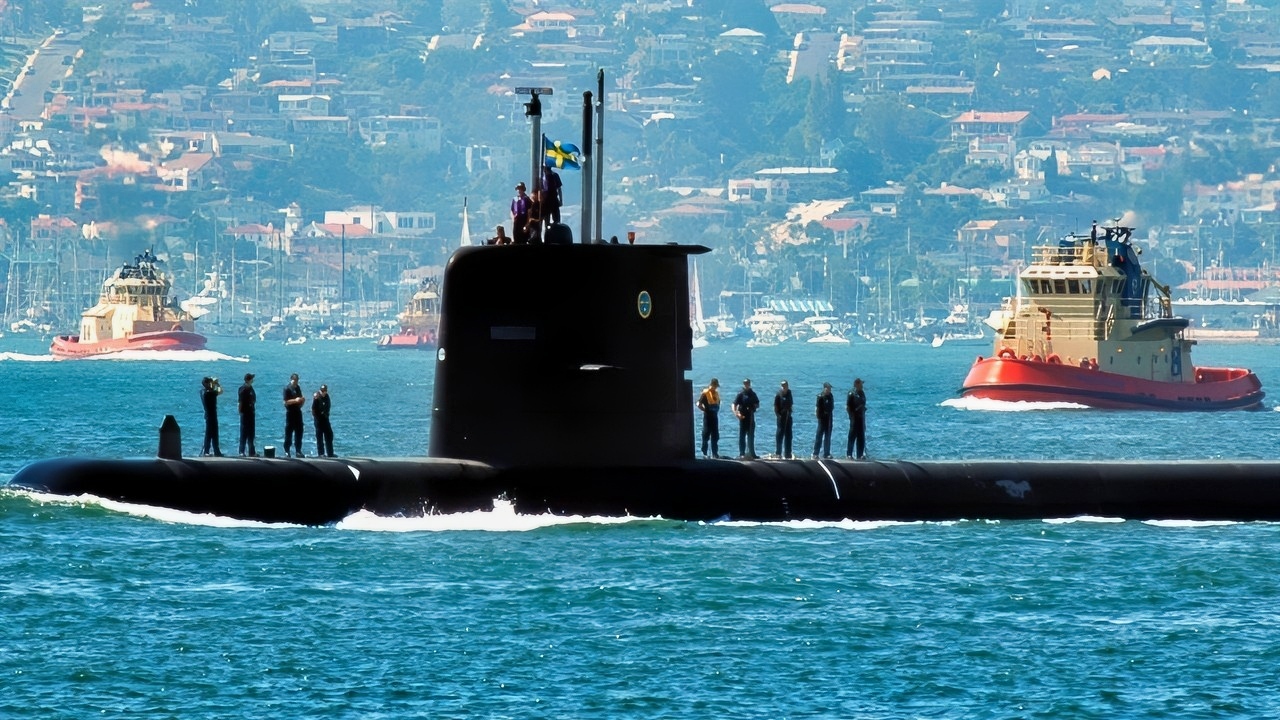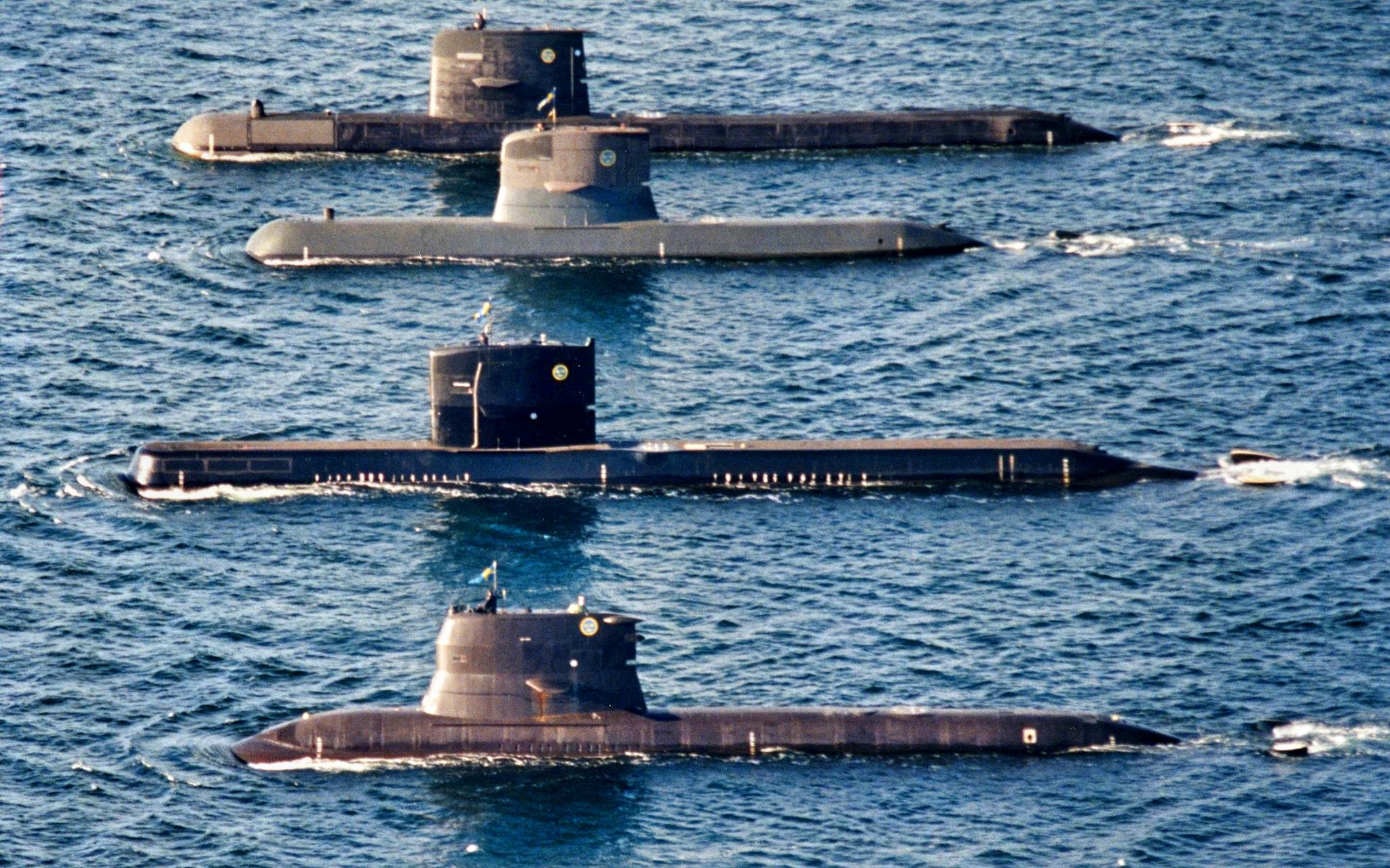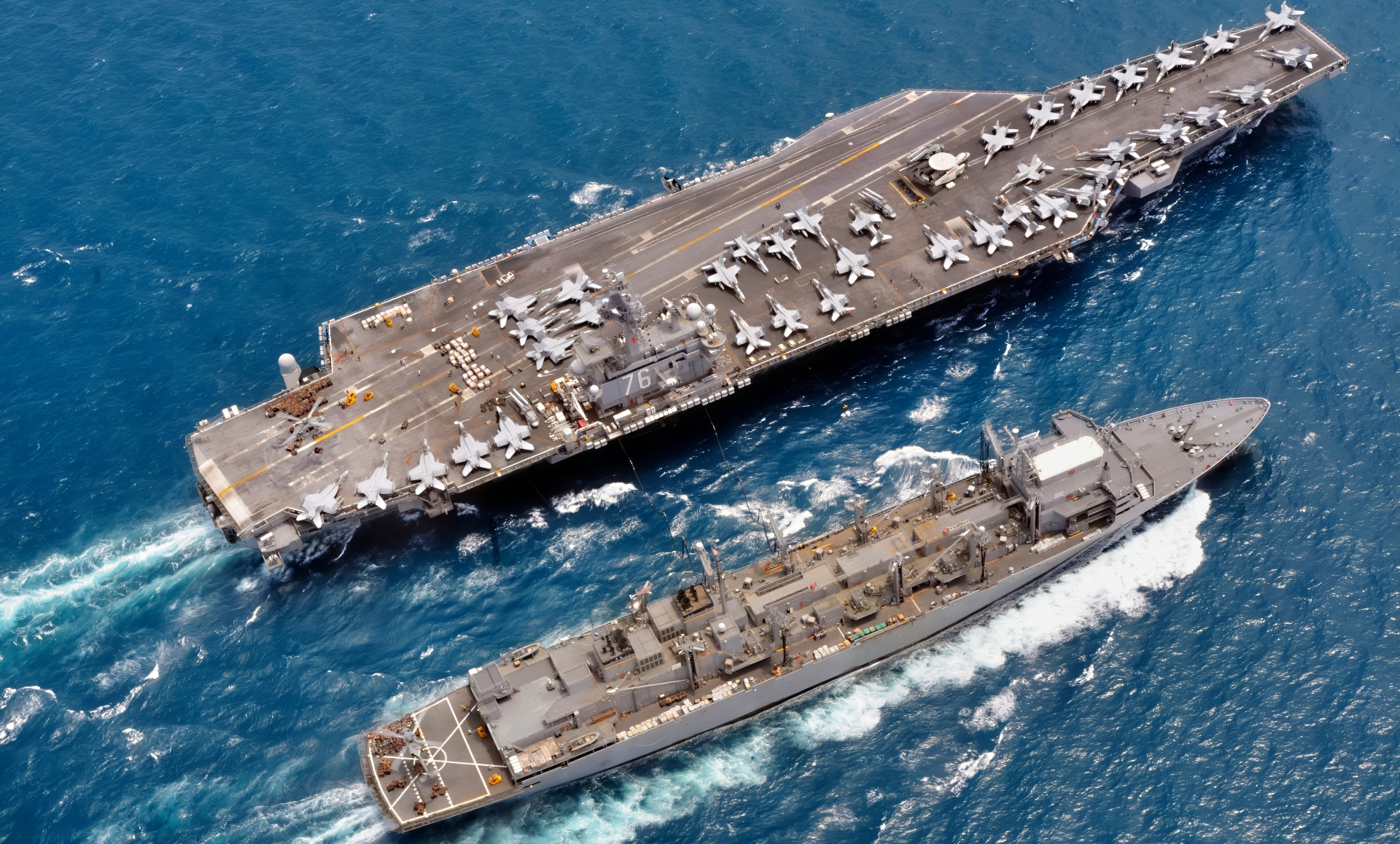Key Points and Summary – In 2005, Sweden’s AIP-equipped HSwMS Gotland penetrated a U.S. carrier strike group and logged simulated torpedo “kills” on USS Ronald Reagan—an exercise result that rattled planners.
-The diesel-electric boat’s Stirling AIP let it stay submerged and ultra-quiet, exposing gaps in carrier defense layers and highlighting how littoral-optimized subs can threaten multibillion-dollar surface assets.

(Oct. 1, 2005) – The Swedish diesel-powered attack submarine HMS Gotland transits through San Diego Harbor during the “Sea and Air Parade” held as part of Fleet Week San Diego 2005. Fleet Week San Diego is a three-week tribute to Southern California-area military members and their families. U.S. Navy photo by Photographer’s Mate 2nd Class Patricia R. Totemeier (RELEASED)
-The episode accelerated U.S. anti-submarine warfare focus on detecting low-acoustic diesel/AIP threats, distributed sensors, and UUVs.
-For smaller navies, Gotland proved a cost-effective deterrent model. Two decades on, Sweden’s upgraded Gotlands and next-gen A26s are even stealthier—keeping pressure on carriers in contested seas.
Gotland-Class: Meet the Sub That Sunk A Navy Carrier In 2005
In 2005, during an exercise with the United States Navy, the Swedish diesel-electric attack submarine HSwMS Gotland penetrated a U.S. carrier strike group and logged simulated “kills” against the USS Ronald Reagan (CVN-76).
Though technically simulated, the incident proved that the submarine was capable of taking out a navy carrier.
The Gotland-class, developed by Swedish shipyard Kockums and equipped with air-independent propulsion (AIP), represented a significant shift in how navies view undersea threats, with submarines now taken far more seriously as a threat to surface vessels.
And as of 2025, with great-power competition at sea intensifying by the week, the lessons of the Gotland-class are arguably more relevant than ever before.

Gotland-Class Submarines. Image Credit: Creative Commons.
How was a relatively small and conventional submarine capable of sinking a U.S. carrier in drills? What does it say about modern naval strategy, submarine procurement, and the vulnerability of large surface warships?
The Exercise That Changed Everything
Between 2005 and 2007, the U.S. Navy leased Gotland from Sweden—including its entire crew—with the express purpose of conducting high-end, asymmetric anti-submarine warfare (ASW) training.
During one of the drills in 2005, the Gotland was able to slip past destroyer escorts, helicopters, and other defense layers and successfully simulated a torpedo attack that “sank” the USS Ronald Reagan.
The success was shocking and alarmed naval planners, and for good reason: a roughly $100 million submarine had effectively sunk a multi-billion-dollar carrier in a realistic simulation environment.
It meant that the United States’ most valuable naval assets were more vulnerable than planners had anticipated.

(August 15, 2008) With SH-60 helicopters moving pallets of supplies both USS Ronald Reagan (CVN 76) and USNS Bridge (T-AOE 10) work together during a replenishment at sea or RAS. With Reagan’s six galleys and approximately 4,100 Sailors it takes a lot of produce to feed that many folks and the Nimitz-class aircraft carrier got what it needed from USNS Bridge to do so.
The Ronald Reagan Carrier Strike Group is on a routine deployment in the 7th Fleet area of responsibility. Operating in the Western Pacific and Indian Ocean, the U.S. 7th Fleet is the largest of the forward-deployed U.S. fleets covering 52 million square miles, with approximately 50 ships, 120 aircraft and 20,000 Sailors and Marines assigned at any given time.
U.S. Navy photo by Senior Chief Mass Communication Specialist (SW/NAC) Spike Call
While the simulation didn’t indicate that a conventional submarine could pull off a successful attack like this every time, it did suggest that it could happen under the correct conditions.
The drill specifically revealed three significant vulnerabilities: one, that diesel/AIP submarines can remain submerged for long periods with low acoustic signatures; two, that carrier strike groups are not completely invulnerable; and three, that anti-submarine warfare doctrine and tactics against quiet submarines require constant attention.
It is essential, however, to note the caveats: this was a simulated strike in an exercise environment with some deliberately imposed constraints.
Real-world combat conditions would differ markedly, but it’s still not out of the question that other submarines like the Gotland-class could cause significant damage to America’s most valuable surface vessels.
Inside the Gotland-Class
The Gotland-class submarines are key platforms for the Swedish Navy, designed primarily for littoral and continental-shelf operations—meaning they are optimized for stealthy patrols, surveillance, and strike missions in shallow coastal waters along the continental shelf, where maneuverability is critical.
The vessels displace roughly 1,600 tons when surfaced, measure 60-63 meters in length, and have crews of 25-32 personnel. Their propulsion system combines conventional diesel-electric engines with two Kockums V4-275R Stirling AIP units.

(October 30, 2007) – USS Ronald Reagan (CVN 76) conducts Board of Inspection and Survey (INSURV) following a six-month Planned Incremental Availability (PIA). All Naval vessels are periodically inspected by INSURV to check their material condition and battle readiness. U.S. Navy photo by Mass Communication Specialist 2nd Class (AW) M. Jeremie Yoder.
The AIP system allows the submarine to remain submerged for extended periods without snorkeling (coming to the surface), dramatically reducing its exposure to detection.
In terms of weapons, the Gotland-class is equipped with four 533mm torpedo tubes, two 400mm tubes, and externally mounted naval mine capability – up to 48 mines. The HSwMS Gotland also operates alongside two sister ships that share the same design: HSwMS Uppland and HSwMS Halland.
The submarine design was perfected for use in shallow seas and archipelagos – regions where nuclear-powered submarines are likely to face acoustic or geographic constraints.
And the submarine’s stealth and endurance have long made it a serious threat across many maritime zones.
What Did Planners Learn?
The case of the Gotland-class “sinking” the USS Ronald Reagan was one of the first moments planners realized that change was coming: the world’s most advanced carriers were not as invulnerable as originally thought.
And since then, carriers have only become more vulnerable thanks to the rise of drones, automation, and increasingly advanced submarine technology. The incident reset assumptions about the role large surface platforms will play in the future.
It also made clear the importance of modern navies investing in detection, tracking, and counter methods for quiet diesel and AIP boats, as well as unmanned underwater vehicles and networked sensor systems. And finally, for smaller and mid-sized navies, the Gotland-class serves as an example of how a small submarine can be a cost-effective deterrent: after all, these small, modest submarines have proven that they can take out enormous, valuable, and powerful assets like carriers.
Two decades later, Sweden’s upgraded Gotland-class and next-generation A26 submarines now field even quieter propulsion systems and far more advanced sensors.
Their evolution shows how a small nation’s engineering can shape global naval doctrine, and how major powers must continually adapt their defenses to protect themselves from smaller threats.
About the Author:
Jack Buckby is a British author, counter-extremism researcher, and journalist based in New York. Reporting on the U.K., Europe, and the U.S., he works to analyze and understand left-wing and right-wing radicalization, and reports on Western governments’ approaches to the pressing issues of today. His books and research papers explore these themes and propose pragmatic solutions to our increasingly polarized society. His latest book is The Truth Teller: RFK Jr. and the Case for a Post-Partisan Presidency.
More Military
The British Army’s Big Challenger 3 Tank Mistake Still Stings
F-35 Stealth Fighter Program Has Passed the Point of No Return
The Iowa-Class Battleships Have A Message for Any Navy on Earth
Canada Has a Big Message for the Eurofighter Typhoon
The Mach 2 F-16 Fighting Falcon Fighter Has a Message for the U.S. Air Force










